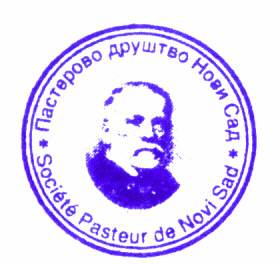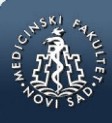md-medicaldata
Main menu:
- Naslovna/Home
- Arhiva/Archive
- Godina 2024, Broj 1
- Godina 2023, Broj 3
- Godina 2023, Broj 1-2
- Godina 2022, Broj 3
- Godina 2022, Broj 1-2
- Godina 2021, Broj 3-4
- Godina 2021, Broj 2
- Godina 2021, Broj 1
- Godina 2020, Broj 4
- Godina 2020, Broj 3
- Godina 2020, Broj 2
- Godina 2020, Broj 1
- Godina 2019, Broj 3
- Godina 2019, Broj 2
- Godina 2019, Broj 1
- Godina 2018, Broj 4
- Godina 2018, Broj 3
- Godina 2018, Broj 2
- Godina 2018, Broj 1
- Godina 2017, Broj 4
- Godina 2017, Broj 3
- Godina 2017, Broj 2
- Godina 2017, Broj 1
- Godina 2016, Broj 4
- Godina 2016, Broj 3
- Godina 2016, Broj 2
- Godina 2016, Broj 1
- Godina 2015, Broj 4
- Godina 2015, Broj 3
- Godina 2015, Broj 2
- Godina 2015, Broj 1
- Godina 2014, Broj 4
- Godina 2014, Broj 3
- Godina 2014, Broj 2
- Godina 2014, Broj 1
- Godina 2013, Broj 4
- Godina 2013, Broj 3
- Godina 2013, Broj 2
- Godina 2013, Broj 1
- Godina 2012, Broj 4
- Godina 2012, Broj 3
- Godina 2012, Broj 2
- Godina 2012, Broj 1
- Godina 2011, Broj 4
- Godina 2011, Broj 3
- Godina 2011, Broj 2
- Godina 2011, Broj 1
- Godina 2010, Broj 4
- Godina 2010, Broj 3
- Godina 2010, Broj 2
- Godina 2010, Broj 1
- Godina 2009, Broj 4
- Godina 2009, Broj 3
- Godina 2009, Broj 2
- Godina 2009, Broj 1
- Supplement
- Galerija/Gallery
- Dešavanja/Events
- Uputstva/Instructions
- Redakcija/Redaction
- Izdavač/Publisher
- Pretplata /Subscriptions
- Saradnja/Cooperation
- Vesti/News
- Kontakt/Contact
 Pasterovo društvo
Pasterovo društvo
- Disclosure of Potential Conflicts of Interest
- WorldMedical Association Declaration of Helsinki Ethical Principles for Medical Research Involving Human Subjects
- Committee on publication Ethics
CIP - Каталогизација у публикацији
Народна библиотека Србије, Београд
61
MD : Medical Data : medicinska revija = medical review / glavni i odgovorni urednik Dušan Lalošević. - Vol. 1, no. 1 (2009)- . - Zemun : Udruženje za kulturu povezivanja Most Art Jugoslavija ; Novi Sad : Pasterovo društvo, 2009- (Beograd : Scripta Internacional). - 30 cm
Dostupno i na: http://www.md-medicaldata.com. - Tri puta godišnje.
ISSN 1821-1585 = MD. Medical Data
COBISS.SR-ID 158558988
KREVETNE STENICE CIMEX LECTULARIUS (LINNAEUS, 1758), NOVI SAD, 2018. - Prikaz slučaja
/
BED BUGS CIMEX LECTULARIUS (LINNAEUS, 1758), NOVI SAD, 2018 – Case report
Authors
Dragana Mijatović1, Verica Simin1, Dragana Vujin1, Milan Miljević1, Nataša Nikolić2, Nenad Vranješ 1
1Pasterov zavod Novi Sad, Hajduk Veljkova 1
2Medicinski fakultet Novi Sad, Univerzitet u Novom Sadu, Katedra za mikrobiologiju sa parazitologijom i imunologijom, Hajduk Veljkova 1, Novi Sad
UDK: 616.5-022.912(497.113)"2018"
The paper was received / Rad primljen: 25.12.2018.
Accepted / Rad prihvaćen: 28.12.2018
Sažetak
Krevetne stenice su ektoparaziti ljudi, pilića, slepih miševa i povremeno domaćih životinja. Parazitiraju hraneći se krvlju. Aktivne su noću kada izlaze iz svojih skoloništa u krevetu ili drugom nameštaju. Kod ljudi na mestu uboda se pojavljuje lokalna reakcija praćena svrabom, posledičnim češanjem se razvijaju ekskorijacije, a naknadno formiraju kruste. Pacijentkinja stara 68 godina javlja se u Službu za prevenciju besnila i drugih zaraznih bolesti Pasterovog zavoda Novi Sad zbog uboda na koži koji jako svrbe. Objektivnim pregledom utvrđujemo da bi se moglo raditi o ujedu insekata. Nakon determinacije insekta koji nam je pacijentkinja dostavila narednog dana utvrđeno je da se radi o krevetnoj stenici (Cimex lectularius, Linaeus, 1758). Tretman pacijenata ujedenih od strane stenica sastoji se u ublažavanju svraba lokalnim kortikosteroidima i oralnim antihistaminicima, uz prevenciju sekundarne bakterijske infekcije.
Ključne reči:
krevetne stenice; infestacija; svrab; Cimex lectularius.
Abstract
Bed bugs are ectoparasites of people, chickens, bats and occasionally the domestic animals and feed by the host’s blood. They are nocturnal and come out of their shelter in bed or other furniture. In humans, the place of the bite shows the local reaction that is followed by itching and forming of the crust. 68-years-old female patient reports at the Pasteur Institute for emerging bite-like wounds on the skin followed by strong itching. Physical examination of patient revealed that the causative agent could be insect. After determination of the insects delivered by the patient next day, organism was identified as Cimex lectularius, Linaeus, 1758 - bed bug. The treatment of the patient who are bitten by the bed bugs consist of lowering of itching by local corticosteroids and oral antihistamines and the prevention of the secondary bacterial infection.
Key words:
bed bugs; itching; Cimex lectularius.
References:
- Cooper R. (2011): Chapter 8 – Ectoparasites, part three: bed bugs and kissing bugs, in: Mallis A, Hedges S, Moreland D (Eds.), Mallis Handbook of Pest Control. The Mallis Handbook Company, Richfield, Ohio, 587–632.
- Reinhardt K, Siva-Jothy MT. Biology of the bed bugs (Cimicidae) Annu Rev Entomol. 2007;52:351–74.
- Marshall AG. The Ecology of Ectoparasitic Insects. London: Academic Press, 1981: 146–7.
- Balvin O, Bartonička T, Simov N, Paunović M, Vilimova J. Distribution and host relations of species of the genus Cimex on bats in Europe . Folia Zool. 2014; 63 (4): 281–289.
- Paksuz S, Özkan B. & Postawa T. Seasonal changes of cave-dwelling bat fauna, and their relationship with microclimate in Dupnisa Cave System (Turkish Thrace). Acta Zool. Cracov. 2007; 50A (1–2): 57–66.
- Heukelbach J, Hengge UR. “Bed bugs, leeches and hookworm larvae in the skin”. Clin. Dermatol.2009; 27 (3): 285–90.
- Davis RF, Johnston GA, Sladden MJ. Recognition and management of common ectoparasitic diseases in travelers. Am J Clin Dermatol. 2009;10:1–8.
- Goddard J, deShazo R. Bed bugs (Cimex lectularius) and clinical consequences of their bites. JAMA. 2009;301:1358–66.
- Usinger RL. (1966): Monograph of Cimicidae (Hemiptera, Heteroptera) Thomas Say Foundation Series, Entomological Society of America, College Park; 341-585.
- Leverkus M, Jochim Rc, et al. Bullous allergic hypersensitivity to bed bug bites mediated by IgE against salivary nitrophorin. J Invest Dermatol. 2006;126(1):91-6.
- Liebold K, Schliemann-Willers S, Wollina U. Disseminated bullous eruption with systemic reaction caused by Cimex lectularius. J Eur Acad Dermatol Venereol. 2003;17:461–3.
- Araujo RN, Costa FS, Gontijo NF, et al. The feeding process of Cimex lectularius (Linnaeus 1758) and Cimex hemipterus (Fabricius 1803) on different bloodmeal sources. J Insect Physiol. 2009;55(12):1151-7.
- Peterson JK, Salazar R, et al. Trypanosoma cruzi Infection Does Not Decrease Survival or Reproduction of the Common Bed Bug, Cimex lectularius. Am J Trop Med Hyg. 2018;98(3):724-734.
- Oswalt ML, Kemp SF. Anaphylaxis: office management and prevention. Immunol Allergy Clin North Am. 2007;27(2):177-191.
PDF Mijatović D. et al • MD-Medical Data 2018;10(4): 209-211
 Medicinski fakultet
Medicinski fakultet